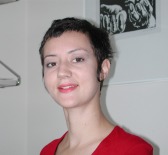Center for Ultrastructure Research, Ludwig-Boltzmann-Institute for Molecular Nanotechnology, University of Agricultural Sciences, Gregor-Mendel-Str. 33, A-1180 Vienna, Austria.
e-mail: pgufler@edv1.boku.ac.at

| Petra C. Gufler, Bernhard
Schuster, Dietmar Pum, and Uwe B. Sleytr
Center for Ultrastructure Research, Ludwig-Boltzmann-Institute for Molecular Nanotechnology, University of Agricultural Sciences, Gregor-Mendel-Str. 33, A-1180 Vienna, Austria. e-mail: pgufler@edv1.boku.ac.at |
 |
This work implements crystalline bacterial cell-surface-layer (S-layer) proteins as an intermediate and stabilizing matrix for the development of solid supported membranes with improved mechanical and long term robustness. Supplementary S-layers act as an ionic reservoir and provide an excellent environment for the reconstitution of functional molecules in a well-defined orientation under non-denaturing conditions. Primarily an S-layer was recrystallized directly on metal-coated silicon or glass slices. Imaging of this recrystallization process by atomic force microscopy revealed a closed crystalline S-layer lattice on the entire metal surface. Another strategy we use are S-layer ultrafiltration membranes (SUMs) as isoporous intermediate layers between test electrode and lipid membrane. Formation of the phospholipid- and tetraetherlipid-membranes was performed with classical and modified Langmuir-Blodgett and Langmuir-Schaefer techniques as well as vesicle fusion. Electrophysical parameters (e.g. capacitance, impedance, life time) of the S-layer supported lipid membranes were investigated by amperometric measurements and impedance spectroscopy. Further on, functional molecules like alpha-hemolysin pores, the potassium-selective ion-carrier valinomycin and the voltage-dependent ion channel alamethicin were reconstituted. The present results recommend S-layer supported lipid membranes as promising structures for nanotechnological applications, particularly in membrane protein-based biosensor technology.